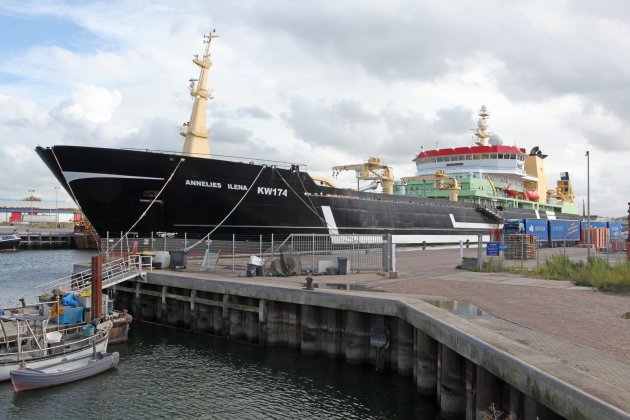Twenty-nine senior voluntary hospital manager’s enjoyed salary top-ups and allowances
Right picture the Master of the National Maternity Hospital Dr Rhona Mahony who received €182,000 of a top-up.
Twenty-nine senior voluntary hospital managers have been paid more than €1m in contributions to their private pension funds out of public funds in the past three years,
A confidential HSE report shows a number of managers are receiving contributions equal to half their salary, far higher than normal employer contributions.
The report, which has been seen by Health Minister James Reilly, said the “continued payment of public funds into private pension schemes is of concern”.
It can also be revealed that 12 senior hospital executives have each been receiving gold-plated private health insurance of up to €5,300 a year, despite their leading roles in the public health system.
Last week, the Master of the National Maternity Hospital Dr Rhona Mahony said she had been “vilified” after it emerged she received a number of additional payments on top of her basic salary of €182,000.
Yet, today we uncover the true scale of the top-ups and allowances enjoyed by a coterie of 191 senior health executives in our leading hospitals and care centres.
A significant proportion of the controversial allowances paid every year are unauthorised and granted without any HSE/departmental sanction, and many managers are in receipt of more than one top-up on top of their salaries.
Also, a number of hospitals repeatedly refused to disclose salary and allowance details requested by the HSE audit department, the report states.
The document, written by Dr Geraldine Smith, assistant national director of Internal Audit HSE, also reveals that three hospital managers – one from Cappagh Hospital, one from the National Rehabilitation Hospital and one from Our Lady’s Hospice – have shared €174,000 in Medical Board allowances.
The report reveals:
- In total, €3,223,950 was paid out annually to 191 managers in allowances out of HSE funds. In addition, €912,472 was paid out to 34 managers in salary and allowance top-ups from private funds.
- One Dublin teaching hospital (which we have confirmed to be the Mater Hospital) paid €25,625 in additional remuneration to its CEO Brian Conlon, in “respect of the hospital’s development programme”. The Mater boss also gets €3,500 in a car expenses allowance. The Department of Health said that no documents in which approval is given for such payments exist in their records.
- €304,718 in allowances to senior managers who assumed additional duties.
- €173,000 was paid to 17 managers in undisclosed allowances. “Agencies did not provide the title of the allowances,” the report said.
- Two executives in Our Lady’s Children Hospital were paid €53,065 extra for taking on additional management duties.
- Two managers in St James’s Hospital received two top-up allowances for assuming extra duties.
- Four senior executives in the Royal Victoria Eye and Ear hospital were paid €89,415 as a contribution to the Hospital Management Group.
- One executive from Our Lady’s Hospice received €12,700 to manage another location.
- Two managers in Beaumont were paid €14,146 in an allowance to bring their salaries up to deputy general manager scale;
- One senior figure at St James’s Hospital received a post-graduate co-ordinator allowance of €51,617; the Hospital’s Haemophilia unit director got €43,468 in a top up; while the hospital’s director of clinical audit unit got €36,417 on top of their salary.
- Four senior managers at the Dublin Dental Hospital got €86,400 in external on-call allowances.
- One manager at Our Lady’s Children Hospital got a €27,931 allowance for advising on ‘clinical risk’.
- One hospital said allowances paid to 26 managers were done so in accordance with Department of Health guidelines but the department disputed that claim saying “no records were found in relation to agency/hospital approved allowances or for any of the allowances listed for the 26 senior management posts”.
- In total, 14 managers in four hospitals had part of their salary paid for out of private funds at a cost of €409,631, or €29,259 each. St Vincent’s Hospital Dublin failed to disclose how much it was paying in salary top-ups out of private funds.
- Of the privately funded allowances, 23 of the 34 managers identified receive one type of top-up payment, 10 receive two types and one manager received three types.
- €396,376 in private funds was used to pay allowances to 18 managers in the following hospitals – the Coombe (one manager), the Mater (one), Holles Street (four), National Rehabilitation Hospital (one), Rotunda (five), South Infirmary (one), CRC (one), Our Lady’s Hospice (three), Our Lady’s Children Hospital (one).
- On-call allowances were also paid to non-clinical management.
In relation to the use of taxpayers’ money to fund private pension contributions for 29 managers in nine hospitals, the report said the practice has continued despite six of the nine hospitals being covered by the public sector pension scheme.
“The rate of pension contributions from public funds to these private pension funds by these agencies range from six per cent to 46 per cent of salary,” the report revealed. Some of the centres involved include Brothers and Sisters of Charity institutions throughout Ireland.
While some of the allowances are deemed to be legitimate, Dr Smith determined that both salaries and allowances were paid without proper sanction from either the HSE or the Department of Health.
“This practice is in contravention of HSE and Department of Health policy.
“There is no current arrangement in place whereby employers are authorised to supplement the approved rate for any post, senior or otherwise,” the report said.
She also concluded that where senior managers’ pay differed from consolidated salary scales, hospitals and agencies said they relied on “verbal approval” from the Department of Health which was given.
However, having checked, the report concluded that no documentation of such agreements exist in Department of Health files.
Five senior executives at the Stewarts Hospital for the disabled are in receipt of up to €5,347 in private health insurance top-ups every year.
The audit report also stated hospitals in various regions either refused or repeatedly failed to disclose properly the full extent of the payments to senior managers.
The report concluded that “there is no current arrangement in place whereby employers are authorised to supplement the approved rate for any post, senior or otherwise”.
Dr Smith added that the Department of Health “had not located any papers dealing with the terms and conditions of existing individual CEOs or senior post holders in these Section 38 agencies”.
She added: “The lack of records is a concern.”
It is also reported that 34 of 63 disability service providers who receive HSE and other funds confirmed that the pay of their CEOs was in excess of stated HSE rules, with 13 of those bodies saying the breach in the pay scales exceeded 15 per cent.
Crucially, the report determined that financial emergency legislation introduced by the Government requires all public sector bodies to recoup any salaries paid which are not in accordance with approved public sector rates.
However, Dr Smith’s audit concludes “no system yet exists within the HSE to retrieve such overpayments”.
On foot of her investigations, Dr Smith made 22 key recommendations in her report.
They include:
* A clear need for health sector allowances to be reviewed, rationalised and for a definitive list of allowances to be issued.
* All non-standard allowances must be fully sanctioned by the HSE/Department of Health and should be regularly reviewed.
* Sunset clauses should also be applied to any sanctioned allowance.
* Discussions between the Department of Health and hospitals should conclude “as soon as possible” in order to end the payments of public funds into private pension schemes.
* Pay rates of CEOs “do not necessarily reflect the comparable size, scale and complexity of each organisation today”. All salaries should be reviewed immediately.
* All future appointments to CEO or senior management posts should require sanction to approve the entirety of the remuneration package and any deviation must have approval.
* The HSE must develop a proper system of recouping unsanctioned or excess payments.
* It also said there must be a “clear and unambiguous policy on the issue of providing additional remuneration to senior managers from private sources”.
Annelies Ilena/Atlantic Dawn ship detained in Killybegs for Irish waters infringement’s
The Irish navy escorting one of world’s largest fishing vessels to Killybegs for alleged fishing infringements
The Atlantic Dawn being escorted by pilot boats into Dublin Port in 2000.
The vessel, which is the largest ever detained in an exercise of this type in Irish waters, was handed over to the Garda Siochána for suspected infringements relating to “high grading” of fish.
“High grading” involves selecting only the largest of a species and discarding the smaller catch by factory vessels at sea.
The vessel was detained shortly after 11am today some 100 nautical miles north-west of Tory island.
It is the 13th vessel apprehended this year for alleged infringements of fisheries regulations, and the 922nd vessel board by Naval Service patrols in 2013.
The vessel sparked a political controversy after it was built in Norway and delivered to Ireland in 2000 for late skipper and fleet owner Kevin McHugh at a time when theEuropean Commission was trying to reduce overall fleet sizes.
After Mr McHugh’s death, it was sold by his family firm Atlantic Dawn Ltd to a Dutch consortium six years ago Parlevliet and Van der Plas, and has been fishing in international waters.
The Donegal company secured government approval to retain its license and substantial quota allocation.
One third of Irish people admit having had sex with a colleague as a result of a Christmas party
A third of Irish employees have admitted to sleeping with a colleague at their Christmas party.
According to a new festive survey by GiftsDirect.com, the curse of the office Christmas party is still fresh in people’s minds.
ONE IN THREE WORKERS HAVE ADMITTED TO HAVING SEX DURING, OR AFTER, THEIR ANNUAL BASH,
The study also showed Christmas shopping habits with Co Wicklow emerging as the most generous area in Ireland, sending the most presents annually.
Dublin sends the fewest number of gifts.
One fifth of Irish people will buy all their presents online, while 13% will be using tablet devices for those purchases.
And it’s not just about presents – “mass times” will hit 5,000 Googlesearches in December, a dramatic hike in comparison to the rest of the year.
Amsterdam pay their alcoholics with beer and tobacco to clean up the city


Officials in Amsterdam say a program that pays alcoholics in cash, tobacco and beer to clean the streets is helping the city learn how to fight addiction.
The program came about in response to complaints about a group of as many as 40 alcoholics loitering in Oosterpark, near the city center, making the park unsafe for visitors, Spiegel Online reported.
Caspar Itz, spokesman for the Oost district government, said the city tried banning alcohol in the park but began about a year ago — with help from addiction experts — to pay alcoholics $13.50 a day, along with half a pack of rolling tobacco and as many as five cans of beer to clean streets and parks.
“These people get something to do, a structured daily routine,” Itz said. “And they’re gone from the park.”
So far, 19 people have sign up for the program. Critics say the city is enabling the alcoholics.
“It certainly makes sense to give alcoholics a task, and thus a fixed daily structure,” said Christa Merfert-Diete, spokeswoman for the German Central Office for Questions of Addiction. “But we don’t see why you should give out tobacco and alcohol along with money.”
Itz said Amsterdam residents are worried about whether it’s ethical to provide beer to alcoholics, but the city has been learning how to fight addiction throughout the process of developing the program.
“It works like giving heroin to addicts,” he said. “An addiction expert is always there and controls how much each individual is getting.”
Dead Minke Whale, & a poorly conditioned turtle called Leon stranded on Irish beaches


News reports on the sad story of a nine-metre long minke whale found dead on the beach at Magilligan Point in Derry.
According to the Irish Whale and Dolphin Group’s (IWDG) Pádraig Whooley, minke whales have been “reported with increased frequency off the Antrim and Down coast” and there have been sightings in the past week off Donegal.
The incident marks the third whale stranding on the Northern Irish coast since September, when two died after beaching in North Antrim.
In more positive marine wildlife news, a loggerhead turtles is being cared for at the Galway Atlantaquarium after stranding in a bad condition in Co Clare during the week.
The Irish Independent reports that the turtle, named Leon after the famous Quilty shipwreck, was recovered after a local woman alerted marine wildlife experts.
“You might see a loggerhead turtle wash up every couple or three years but not very often at all,” said Dr Simon Berrow of the IWDG, who said the turtle may need several months’ rehab before its fit to return to the wild.
That’s an issue that presents its own challenges due to its smaller size and distance from its usual tropical waters.
Dinosaur that terrorised the Tyrannosaurs found in Utah


A NEW GIANT MEAT-EATING DINOSAUR THAT TERRORISED THE EARLY RELATIVES OF TYRANNOSAURUS REX (ABOVE RIGHT) HAS BEEN DISCOVERED IN UTAH
A new species of predatory dinosaur that was so big it would have terrorised early Tyrannosaurs has been discovered.
Siats meekerorum, named after a mythical man-eating monster, is thought to have grown up to 40ft long, making it one of the three biggest meat eating dinosaurs to have lived.
The dinosaur lived around 98 million years ago and as the top predator of its time would have dominated over relatives of the Tyrannosaurus rexfor millions of years.
The discovery suggests that Tyrannosaurs were far from being the most fearsome predator in the food chain for much of their history.
However, T. rex itself, which appeared around 30 million years later, would still have dwarfed the new species and probably weighed twice as much.
Dr Lindsay Zanno, a palaeontologist at North Carolina State University and the North Carolina Museum of Natural Sciences who led the study of the fossils, said: “Contemporary tyrannosaurs would have been no more than a nuisance to Siats, like jackals at a lion kill.
“It wasn’t until carcharodontosaurs like this bowed out that the stage could be set for the evolution of T. rex.”
The researchers who made the discovery have described Siats as a type of carcharodontosaur – a group of large meat eating dinosaurs that lived up to 100 million years ago and had enormous jaws filled with serrated teeth up to eight inches long.
Fossilised remains of Siats were discovered during an excavation in the Cedar Mountain Formation in Utah.
Among the fossilised bones recovered were vertebrae, a hind leg bone and part of the creature’s pelvis.
Dr Zanno and her colleagues, whose study is published in the journal Nature Communications, believe they belonged to a juvenile that would have been more than 30 feet long and weighted at least four tons.
They believe that adults could have grown up to 40 feet long. They named it Siats – pronounced see-atch – after the cannibalistic clown like monster that appear in legends of the Ute American Indian tribe.
The Meekerorum part of the name is after a family with the surname Meeker who have sponsored some of the work by the researchers in the past.
The scientists say Siats and earlier carcharodontosaurs such asAcrocanthosaurus would have dominated as the top predators for much of the Cretaceous period.
While there is no evidence that they actively hunted and killed smaller tyrannosaurs, experts believe clashes between the species over prey.
Siats would probably have preferred slow moving herbivores as prey, but it may have fought tyrannosaurs off its kills in the same way lions will with jackals.
It was not until the final 20 million years of the age of the dinosaurs that these were then eclipsed by the Tyrannosaurs.
Dr Zanno said: “Carcharodontosaurs reigned for much longer in North America than we expected.
“It has been 63 years since a predator of this size has been named from North America.
“You can’t imagine how thrilled we were to see the bones of this behemoth poking out of the hillside.”
“There were large plant-eating dinosaurs living alongside Siats, including an iguanodontian known as Eolambia.
“It probably did not hunt tyrannosaurs – why hunt another small predator with teeth and claws, when you can track a giant plant eater for lunch?”
Her colleague Peter Makovicky, from Chicago’s Field Museum of Natural History, added that Siats would have been far larger than any other predators at the time.
He said: “The huge size difference certainly suggests that tyrannosaurs were held in check by carcharodontosaurs, and only evolved into enormous apex predators after the carcharodontosaurs disappeared.






No comments:
Post a Comment